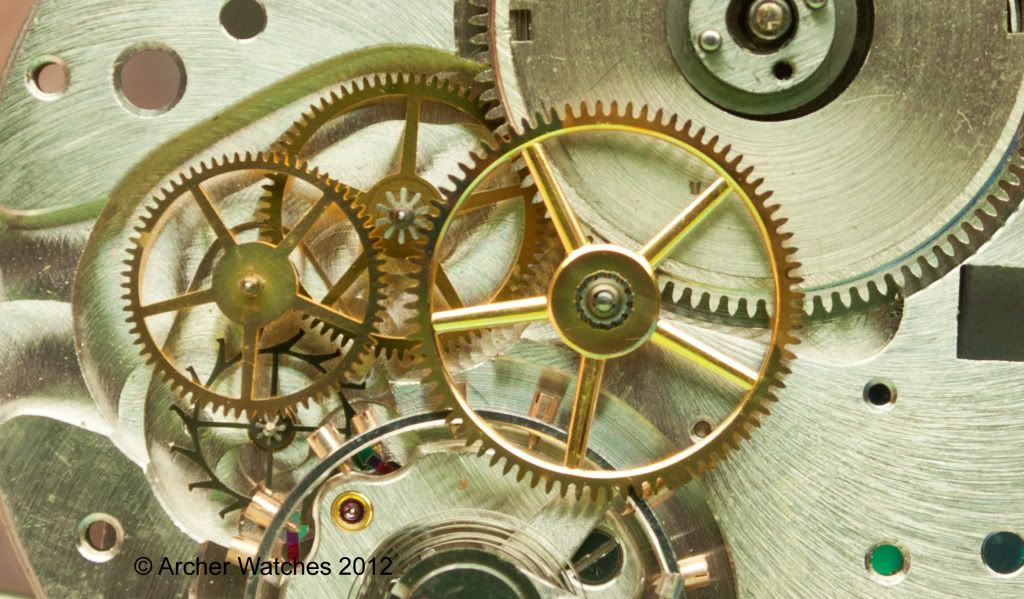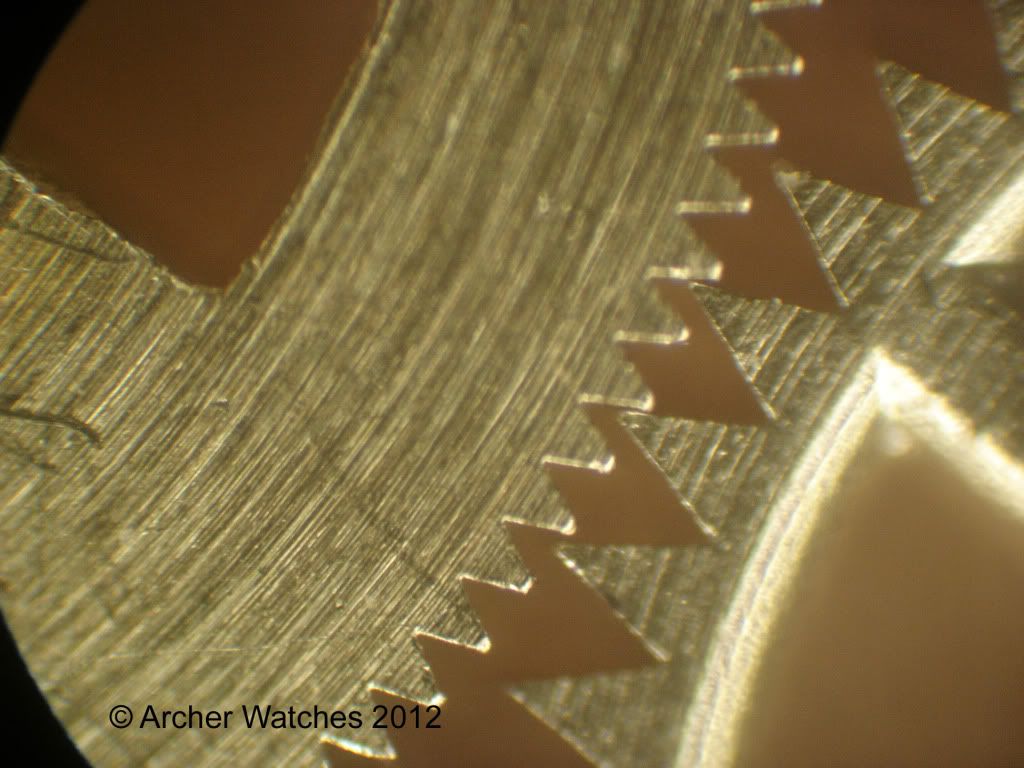One of the biggest drawbacks to me about a chronograph is the seconds hand just being motionless at 12.
My question for those who know concerns the second hand. I like to keep it moving all day,
Before I answer the technical side of this, as an aside I find it odd that people would buy a watch specifically designed to measure elapsed times, and then complain that the elapsed timer doesn't run constantly, which defeats the purpose of having the elapsed timer basically. I know some chronographs don't have any constant seconds hand on the dial, but the Speedmaster pro does...
But anyway, now the technical answer...here are some traditional wheels inside a watch that are designed to transmit power for the constantly running wheel train that makes the watch run:

Aside from the escape wheel, all the other wheels in this photo from the barrel to the fourth wheel, have a specific design for the tooth form that is meant to be run all the time. In contrast here are the teeth that are part of diving the chronograph mechanism on a Cal. 321 Speedmaster:

Note that the 861, 1861, etc. look the same as these do. Where the teeth in the first photo are have multi-radius profiles, have rounded tips on each tooth, and are meant to have smooth power transfer, these teeth on the chronograph parts are very pointed and sharp. The reason for this is that these teeth have to come together when the chronograph is switched on in a horizontally coupled chronograph as these are - the wheel shown on the left here is constantly turning, where the one on the right is stationary. If you had the very rounded teeth in the first photo, there is a greater chance that the teeth would contact each other tip to tip, and the mechanism would jam or be damaged. Even if it wasn't jammed up or damaged, it could cause erratic jumping of the chronograph hands on engagement.
So these teeth are not really designed to be run all the time. So what happens if you do? Well the teeth will wear over time. If parts are readily available, they are not super expensive to replace, so although it might add some cost to the service of the watch, if you really enjoy it, that won't be significant. In terms of the watch performance, you are adding load to the wheel train with the chronograph on, so this will lower balance amplitudes and will likely affect timekeeping. It will also cause the watch to stop sooner than it would with the chronograph not running.
So you have to decide for yourself if the potential for added costs and reduced accuracy is important enough to keep you from running it all the time. Now if you were referring to a vertical clutch chronograph, then that is an entirely different question...
Cheers, Al








